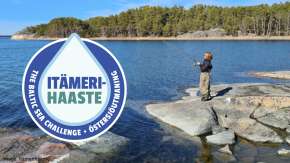The Baltic Sea Challenge continues – the fourth action period emphasizes extensive collaboration in water protection

The Baltic Sea is one of the busiest maritime areas globally, facing immense usage pressure. It is also one of the most polluted seas in the world. National and international conservation efforts have been ongoing for decades, but the excessive load from past decades still affects the sea. The Baltic Sea is particularly threatened by nutrient loading from human activities, climate change, harmful substances, and global biodiversity loss.
Turku and Helsinki established the Baltic Sea Challenge in 2007, committing to concrete conservation actions that surpass minimum legal requirements and challenging other actors to join the network. Both Turku and Helsinki have succeeded in reducing the Baltic Sea’s load, with several proven solutions integrated into the cities’ normal operations.
The new Baltic Sea Action Program, covering the years 2024–2028, is the fourth in sequence. The fourth action period, from 2024 to 2028, places emphasis on reducing the impact of stormwater, promoting biodiversity, and fostering collaboration and participation. Additionally, extensive collaboration and engaging the surrounding society in water protection have become increasingly important.
The new action program consists of 27 measures supporting six goals that address the most significant threats to the Baltic Sea and key solutions. The goals include restraining eutrophication, reducing harmful substances, increasing biodiversity in water and coastal areas, promoting sustainable use of the seas, preventing littering, and enhancing collaboration and participation.
In Port of Turku the management perceives that, due to changes in land use, potential increases in flooding, and heavy rainfall, stormwater management will become even more crucial in the harbour area. To prevent littering, the Port has already implemented several measures, including waste disposal services for ships and a no-special-fee system.
During the new period, Port of Turku is closely monitoring the development of a compensation model for the environmental impacts of waterways and port maintenance. The work aims to identify and determine the compensation required for water-related harm in situations where it cannot be avoided.
The Port is also interested in reducing the water load in the catchment areas of the Aura River. If suspended solids loading can be reduced, the need for dredging will also decrease.
